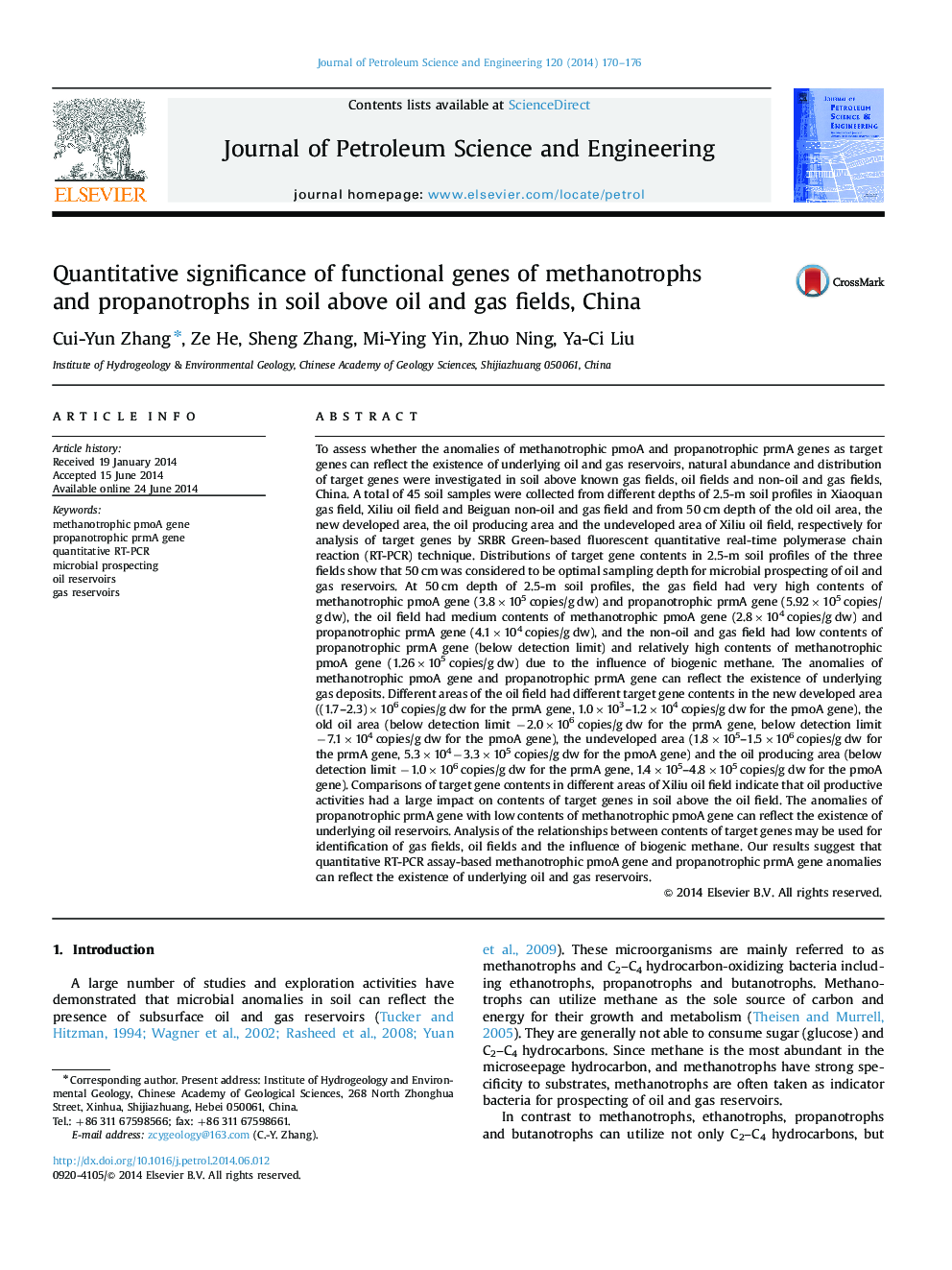| Article ID | Journal | Published Year | Pages | File Type |
|---|---|---|---|---|
| 1755043 | Journal of Petroleum Science and Engineering | 2014 | 7 Pages |
•Use of quantitative real-time polymerase chain reaction (RT-PCR) technique.•Target genes are methanotrophic pmoA gene and propanotrophic prmA gene.•Sampling sites are known gas fields, oil fields and different areas of the oil field.•Target gene anomalies can reflect the existence of underlying oil and gas reservoirs.
To assess whether the anomalies of methanotrophic pmoA and propanotrophic prmA genes as target genes can reflect the existence of underlying oil and gas reservoirs, natural abundance and distribution of target genes were investigated in soil above known gas fields, oil fields and non-oil and gas fields, China. A total of 45 soil samples were collected from different depths of 2.5-m soil profiles in Xiaoquan gas field, Xiliu oil field and Beiguan non-oil and gas field and from 50 cm depth of the old oil area, the new developed area, the oil producing area and the undeveloped area of Xiliu oil field, respectively for analysis of target genes by SRBR Green-based fluorescent quantitative real-time polymerase chain reaction (RT-PCR) technique. Distributions of target gene contents in 2.5-m soil profiles of the three fields show that 50 cm was considered to be optimal sampling depth for microbial prospecting of oil and gas reservoirs. At 50 cm depth of 2.5-m soil profiles, the gas field had very high contents of methanotrophic pmoA gene (3.8×105 copies/g dw) and propanotrophic prmA gene (5.92×105 copies/g dw), the oil field had medium contents of methanotrophic pmoA gene (2.8×104 copies/g dw) and propanotrophic prmA gene (4.1×104 copies/g dw), and the non-oil and gas field had low contents of propanotrophic prmA gene (below detection limit) and relatively high contents of methanotrophic pmoA gene (1.26×105 copies/g dw) due to the influence of biogenic methane. The anomalies of methanotrophic pmoA gene and propanotrophic prmA gene can reflect the existence of underlying gas deposits. Different areas of the oil field had different target gene contents in the new developed area ((1.7–2.3)×106 copies/g dw for the prmA gene, 1.0×103–1.2×104 copies/g dw for the pmoA gene), the old oil area (below detection limit −2.0×106 copies/g dw for the prmA gene, below detection limit −7.1×104 copies/g dw for the pmoA gene), the undeveloped area (1.8×105–1.5×106 copies/g dw for the prmA gene, 5.3×104−3.3×105 copies/g dw for the pmoA gene) and the oil producing area (below detection limit −1.0×106 copies/g dw for the prmA gene, 1.4×105–4.8×105 copies/g dw for the pmoA gene). Comparisons of target gene contents in different areas of Xiliu oil field indicate that oil productive activities had a large impact on contents of target genes in soil above the oil field. The anomalies of propanotrophic prmA gene with low contents of methanotrophic pmoA gene can reflect the existence of underlying oil reservoirs. Analysis of the relationships between contents of target genes may be used for identification of gas fields, oil fields and the influence of biogenic methane. Our results suggest that quantitative RT-PCR assay-based methanotrophic pmoA gene and propanotrophic prmA gene anomalies can reflect the existence of underlying oil and gas reservoirs.
